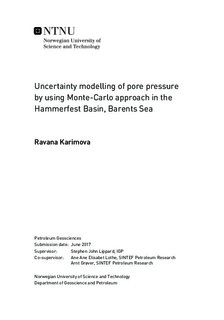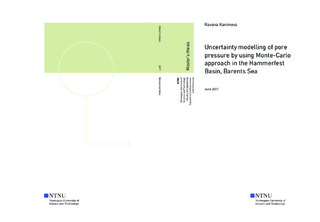| dc.description.abstract | The results of this study suggest that: 1) The present Hammerfest Basin is neither affected by large amount of overpressure, nor there is an ongoing leakage detected, 2) the present overpressure distribution in the basin can be modelled with low deviation 2) overpressure history expands from late Jurassic until present day 3) the timing and location of hydraulic leakage are modelled.
The number of leaking compartment increases as the magnitude of the simulated minimum horizontal stress decreases. Variation of shale permeability is affecting the leakage by making the overlying shale formation either too tight causing the hydraulic leakage, or too open causing the early release of the generated overpressure. Slight difference in the magnitude of the two different tested erosion maps lead to the large difference in the simulation results. Variation in burial history has an immense influence on the timing of the leakage for the compartments, where net erosion from Henriksen et al. (2011), gave the lowest deviation from measured pressure (+/- 5 bar). The Monte Carlo approach showed that the Grauls number should be <1.14. | |

